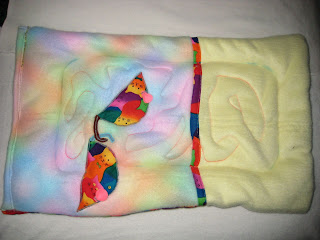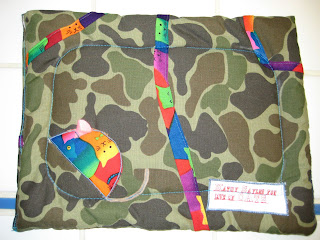Intro:
I recently acquired a Necchi Mira. It’s a cast iron machine in what’s called a ‘Coronet’ cabinet. This looks like a small chest of drawers but the front (with three drawer pulls) is actually just a false cover for the bench, which pulls out and away from the usual desk type of cabinet. The pulls get yanked on over the years (and the seat is purty heavy) and the top one is missing (aargh!). I doubt I can find a replacement (these have two screws on the back at 2” center) so I’ll probably need to buy a full new set from one of the Home stores (unless one of you can help?).
I digress already: here’s the dilemma:
You have a terrific old SM (sewing machine…some of my pals have written me some very strange replies when I forget to translate that one!) with loads of widgets, clutter, thread and you-name-its in the drawers. Maybe the previous owner (who is usually the younger female relative of an old lady who died) even donated several shoe-boxes of miscellaneous sewing paraphernalia. There was probably a clause in the contract that said “No picking, take it all or nothing!”. So now someone else’s problem has become your own.
You get home and unload it all from the car, which is now rendered sans housing for the unforeseeable future. You are amazed at the mountain of clutter that lays before you and the sheer volume of large black spiders with hour-glass markings running to the four corners of your formerly tidy domicile. So you run inside for a swift jar of cooking sherry…yeuch! You resist the urge to dash out immediately for a fifth of decent vodka. Instead, you contemplate your folly!
You spend 3 days cutting the thread that’s tangled up between the bobbins, reels, zips and other paraphernalia of a lifetime of messy sewing activity. Then you spend yet another day prying out rusty pins from the teeny space between bits of wood at the bottom of drawers and the task begins to pall on you.
So, you do the basic tidy, pins, thread and buttons all cleared out and relegated to their particular jars and boxes. You pause to contemplate adding a wing to your sewing area but crush the thought a-borning lest you lose sight of the awful task at hand. There remains a great pile of stuff that may or may not belong to this sewing machine, some other sewing machine, the kitchen, the draperies, the hospital, the first edition of the Guttenberg bible etc.
Primal scream!
One could take the easy way out and re-home the SM, leaving everything in the drawer(s) but some of the stuff clearly belongs elsewhere and may even complete another machine (owned by someone else or maybe even you!).
And so…the detective works begins!
I joined the relevant SM on-line group and downloaded the pages of the 90 page manual pertaining to accessories. I find about half of them and set them aside.
I also found several presser feet with the word ‘Singer’ or ‘Simanco’ stamped on them and a few others which are obviously wrong because they are slant shanks or short shanks (the Necchi Mira is a high shank machine). So here’s a few photo of the stuff I’m now looking at and cannot identify: Any help would be gratefully received!
I forgot to put a scale in. The above instrument is about 3” long and the various ‘needle’ attachments that seem to go with it are quite fine. The bit on the left is plastic (was it used to spear an olive at the last party the sewing-lady attended, or is it relevant to this doo-hickey?). The bit on the right is just a piece of wire (from the box of the chow-mein consumed during the final sewing session?)
The spherical handle on the thing that looks like a screwdriver base is about 1” diameter. It’s hollow but not magnetic. The handle turns but the inside handle moves just a hair.
The two vaguely triangular things look like shelf supports but why are they different? Maybe they fit in a sewing box/base?
The most interesting thing in this collection is that widget on the bottom row, 2nd from left. There’s a little thing on the pointy end that looks like a tiny crochet hook and a spare one hanging off the handle.
The two bullet-looking things are quite heavy, one has a little bump on the end and the other a little hollow area but they don’t join together. Are these weights of some kind?
The circular plastic thing in the middle, at left looks nondescript but I’ve seen this before in the drawers of other SMs.
Any thoughts at all, would be appreciated
Kath




























